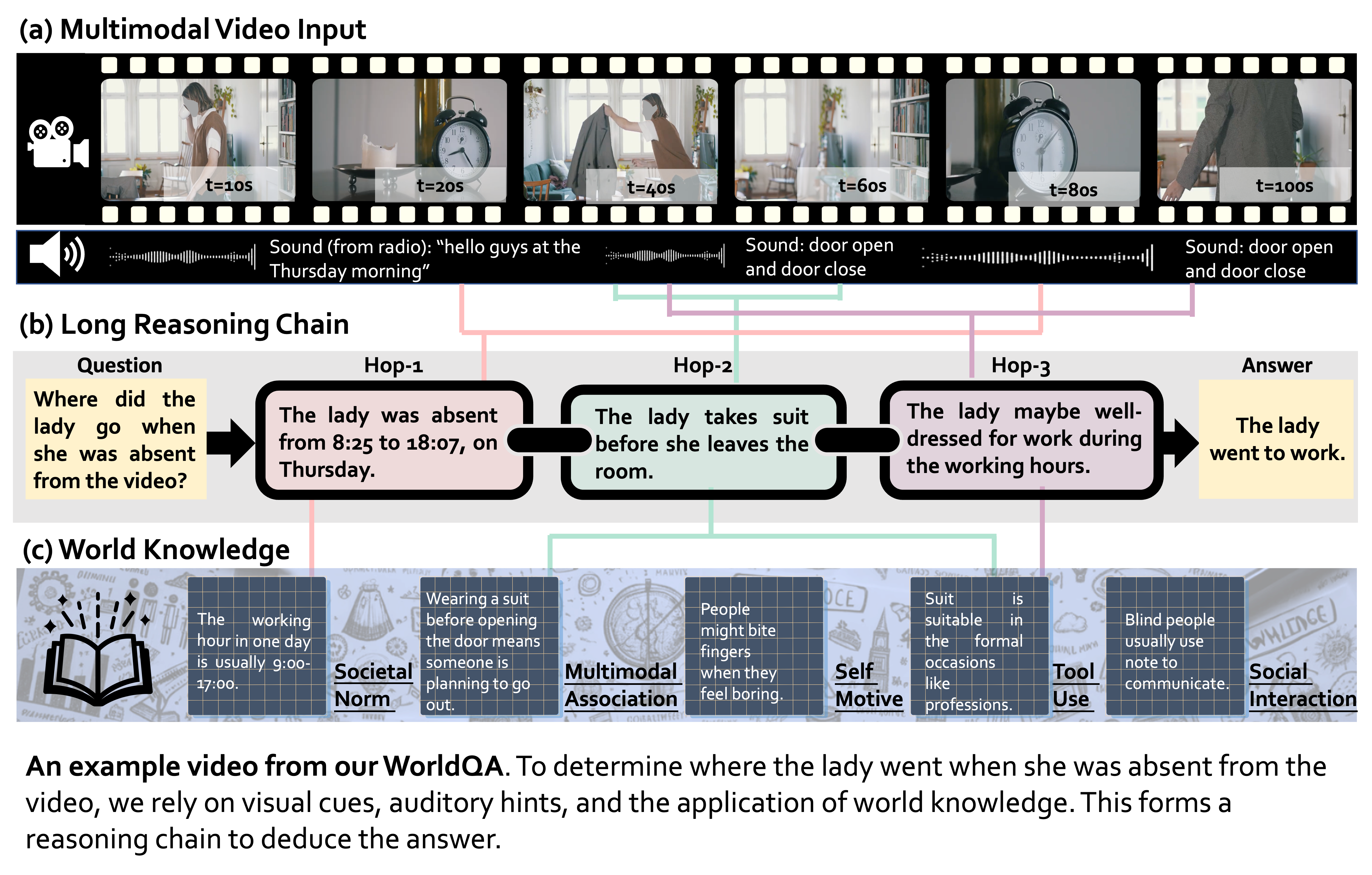publications
* means equal contribution
2024
-
 LMMs-Eval: Reality Check on the Evaluation of Large Multimodal ModelsKaichen Zhang*, Bo Li* , Peiyuan Zhang*, Fanyi Pu*, Joshua Adrian Cahyono, Kairui Hu , Shuai Liu, Yuanhan Zhang, Jingkang Yang , Chunyuan Li, and Ziwei Liu2024
LMMs-Eval: Reality Check on the Evaluation of Large Multimodal ModelsKaichen Zhang*, Bo Li* , Peiyuan Zhang*, Fanyi Pu*, Joshua Adrian Cahyono, Kairui Hu , Shuai Liu, Yuanhan Zhang, Jingkang Yang , Chunyuan Li, and Ziwei Liu2024The advances of large foundation models necessitate wide-coverage, low-cost, and zero-contamination benchmarks. Despite continuous exploration of language model evaluations, comprehensive studies on the evaluation of Large Multi-modal Models (LMMs) remain limited. In this work, we introduce LMMS-EVAL, a unified and standardized multimodal benchmark framework with over 50 tasks and more than 10 models to promote transparent and reproducible evaluations. Although LMMS-EVAL offers comprehensive coverage, we find it still falls short in achieving low cost and zero contamination. To approach this evaluation trilemma, we further introduce LMMS-EVAL LITE, a pruned evaluation toolkit that emphasizes both coverage and efficiency. Additionally, we present Multimodal LIVEBENCH that utilizes continuously updating news and online forums to assess models’ generalization abilities in the wild, featuring a low-cost and zero-contamination evaluation approach. In summary, our work highlights the importance of considering the evaluation trilemma and provides practical solutions to navigate the trade-offs in evaluating large multi-modal models, paving the way for more effective and reliable benchmarking of LMMs. We opensource our codebase and maintain leaderboard of LIVEBENCH at https://github.com/EvolvingLMMs-Lab/lmms-eval and https://huggingface.co/spaces/lmms-lab/LiveBench.
@article{zhang2024lmms, title = {LMMs-Eval: Reality Check on the Evaluation of Large Multimodal Models}, author = {Zhang, Kaichen and Li, Bo and Zhang, Peiyuan and Pu, Fanyi and Cahyono, Joshua Adrian and Hu, Kairui and Liu, Shuai and Zhang, Yuanhan and Yang, Jingkang and Li, Chunyuan and Liu, Ziwei}, year = {2024}, eprint = {2407.12772}, archiveprefix = {arXiv}, primaryclass = {cs.CV}, google_scholar_id = {qjMakFHDy7sC}, } -
 WorldQA: Multimodal World Knowledge in Videos through Long-Chain ReasoningYuanhan Zhang , Kaichen Zhang, Bo Li, Fanyi Pu, Christopher Arif Setiadharma, Jingkang Yang, and Ziwei LiuarXiv preprint arXiv:2405.03272, 2024
WorldQA: Multimodal World Knowledge in Videos through Long-Chain ReasoningYuanhan Zhang , Kaichen Zhang, Bo Li, Fanyi Pu, Christopher Arif Setiadharma, Jingkang Yang, and Ziwei LiuarXiv preprint arXiv:2405.03272, 2024Multimodal information, together with our knowledge, help us to understand the complex and dynamic world. Large language models (LLM) and large multimodal models (LMM), however, still struggle to emulate this capability. In this paper, we present WorldQA, a video understanding dataset designed to push the boundaries of multimodal world models with three appealing properties: (1) Multimodal Inputs: The dataset comprises 1007 question-answer pairs and 303 videos, necessitating the analysis of both auditory and visual data for successful interpretation. (2) World Knowledge: We identify five essential types of world knowledge for question formulation. This approach challenges models to extend their capabilities beyond mere perception. (3) Long-Chain Reasoning: Our dataset introduces an average reasoning step of 4.45, notably surpassing other videoQA datasets. Furthermore, we introduce WorldRetriever, an agent designed to synthesize expert knowledge into a coherent reasoning chain, thereby facilitating accurate responses to WorldQA queries. Extensive evaluations of 13 prominent LLMs and LMMs reveal that WorldRetriever, although being the most effective model, achieved only 70% of humanlevel performance in multiple-choice questions. This finding highlights the necessity for further advancement in the reasoning and comprehension abilities of models. Our experiments also yield several key insights. For instance, while humans tend to perform better with increased frames, current LMMs, including WorldRetriever, show diminished performance under similar conditions. We hope that WorldQA, our methodology, and these insights could contribute to the future development of multimodal world models.
2023
-
 OtterHD: A High-Resolution Multi-modality Model2023
OtterHD: A High-Resolution Multi-modality Model2023In this paper, we present OtterHD-8B, an innovative multimodal model evolved from Fuyu-8B, specifically engineered to interpret high-resolution visual inputs with granular precision. Unlike conventional models that are constrained by fixed-size vision encoders, OtterHD-8B boasts the ability to handle flexible input dimensions, ensuring its versatility across various inference requirements. Alongside this model, we introduce MagnifierBench, an evaluation framework designed to scrutinize models’ ability to discern minute details and spatial relationships of small objects. Our comparative analysis reveals that while current leading models falter on this benchmark, OtterHD-8B, particularly when directly processing high-resolution inputs, outperforms its counterparts by a substantial margin. The findings illuminate the structural variances in visual information processing among different models and the influence that the vision encoders’ pre-training resolution disparities have on model effectiveness within such benchmarks. Our study highlights the critical role of flexibility and high-resolution input capabilities in large multimodal models and also exemplifies the potential inherent in the Fuyu architecture’s simplicity for handling complex visual data.
@misc{li2023otterhd, title = {OtterHD: A High-Resolution Multi-modality Model}, author = {Li, Bo and Zhang, Peiyuan and Yang, Jingkang and Zhang, Yuanhan and Pu, Fanyi and Liu, Ziwei}, year = {2023}, eprint = {2311.04219}, archiveprefix = {arXiv}, primaryclass = {cs.CV}, google_scholar_id = {u-x6o8ySG0sC}, } -
 MIMIC-IT: Multi-Modal In-Context Instruction TuningBo Li*, Yuanhan Zhang*, Liangyu Chen*, Jinghao Wang*, Fanyi Pu*, Jingkang Yang , Chunyuan Li, and Ziwei Liu2023
MIMIC-IT: Multi-Modal In-Context Instruction TuningBo Li*, Yuanhan Zhang*, Liangyu Chen*, Jinghao Wang*, Fanyi Pu*, Jingkang Yang , Chunyuan Li, and Ziwei Liu2023High-quality instructions and responses are essential for the zero-shot performance of large language models on interactive natural language tasks. For interactive vision-language tasks involving intricate visual scenes, a large quantity of diverse and creative instruction-response pairs should be imperative to tune vision-language models (VLMs). Nevertheless, the current availability of vision-language instruction-response pairs in terms of quantity, diversity, and creativity remains limited, posing challenges to the generalization of interactive VLMs. Here we present MultI-Modal In-Context Instruction Tuning (MIMIC-IT), a dataset comprising 2.8 million multimodal instruction-response pairs, with 2.2 million unique instructions derived from images and videos. Each pair is accompanied by multi-modal in-context information, forming conversational contexts aimed at empowering VLMs in perception, reasoning, and planning. The instruction-response collection process, dubbed as Syphus, is scaled using an automatic annotation pipeline that combines human expertise with GPT’s capabilities. Using the MIMIC-IT dataset, we train a large VLM named Otter. Based on extensive evaluations conducted on vision-language benchmarks, it has been observed that Otter demonstrates remarkable proficiency in multi-modal perception, reasoning, and in-context learning. Human evaluation reveals it effectively aligns with the user’s intentions. We release the MIMIC-IT dataset, instruction-response collection pipeline, benchmarks, and the Otter model.
@article{li2023mimicit, title = {MIMIC-IT: Multi-Modal In-Context Instruction Tuning}, author = {Li, Bo and Zhang, Yuanhan and Chen, Liangyu and Wang, Jinghao and Pu, Fanyi and Yang, Jingkang and Li, Chunyuan and Liu, Ziwei}, year = {2023}, eprint = {2306.05425}, archiveprefix = {arXiv}, primaryclass = {cs.CV}, google_scholar_id = {IjCSPb-OGe4C}, }



